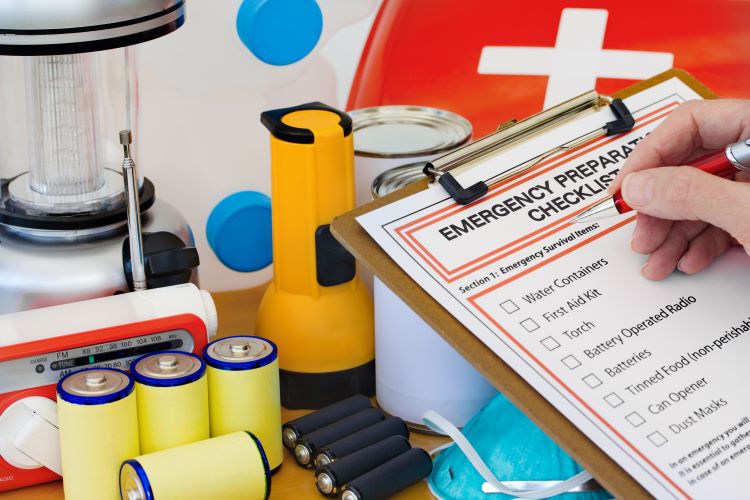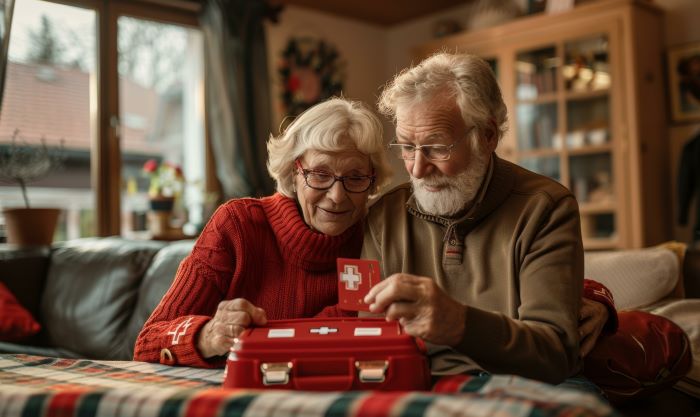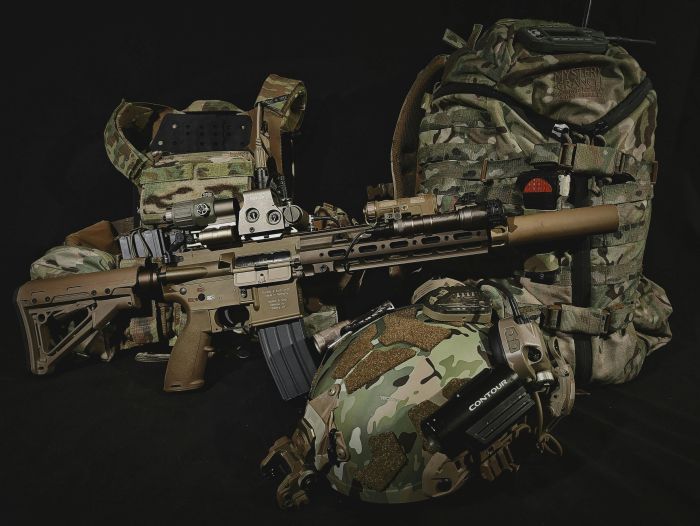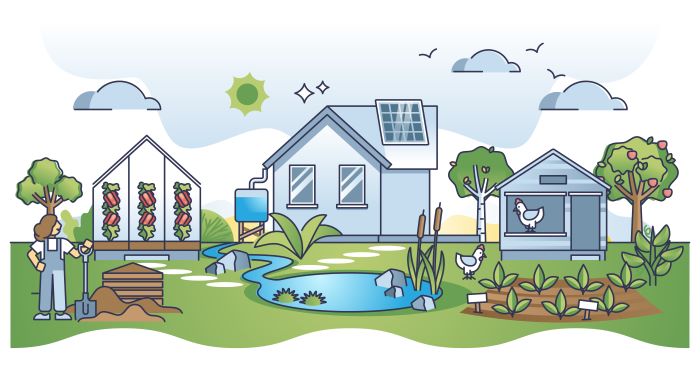Step-by-step Guide to Building a Senior-friendly Emergency Kit

Understanding the Needs of Seniors in Emergencies
Yes, I am a senior, too. So, when I address the topic of emergency preparedness, I’m looking directly at our unique needs as seniors. We face distinctive challenges that demand our attention. For example, chronic health issues and reduced mobility are not just inconveniences; in an emergency, they can dictate the difference between a minor hiccup and a life-threatening situation.
Personalizing an emergency kit for seniors isn’t just a thoughtful gesture; it’s a critical step in ensuring our safety and well-being.
To effectively personalize a senior’s survival kit, we must:
- thoroughly understand each other’s medical conditions,
- allergies,
- and healthcare providers’ contact information.

After walking through what this looks like in practice, my next step is to translate this understanding into the contents of our emergency kit. This is where knowing the specifics—things like what medications we absolutely can’t do without and which personal items would bring us comfort—becomes helpful and potentially life-saving.
Essential Items for the Senior Emergency Kit
Prioritizing essentials in an emergency kit can be a lifesaver, especially for seniors.
Medications are one of the top priorities.
- Ensure that all prescriptions are current and that there’s a supply for at least a week.
- Clear instructions for dosage and administration are also vital.
- Don’t forget to store a list of your medications and the prescribing doctor’s contact information.
Documentation is equally crucial.
- The kit should contain photocopies of insurance cards, identification, and medical records.
- Create a contact list that includes family and doctors, local emergency services, and nearby hospitals.
What’s food without thought to nutrition and hydration?
- Stock the kit with senior-friendly, non-perishable food items – think no or low sodium, soft textures, and easy-to-open packaging.
- Hydration is non-negotiable, so include several bottles of water or a supply of hydration packets.
Communication tools mean more than just a fully charged cell phone.
- Store an extra battery or a solar-powered charger.
- Remember to list emergency numbers in the phone’s contacts and on a physical card.
- A small, battery-operated radio can inform us if the power is out.
Finally, consider personal comfort.
- Sanitizing wipes,
- a first-aid kit,
- spare eyeglasses,
- comfortable clothing,
- and blankets are just a few items that can make a big difference.
- Don’t overlook personal care items—
- toothbrushes,
- incontinence supplies,
- and other hygiene products will maintain dignity and health during stressful times.
Adapting the Emergency Kit to Specific Healthcare Needs
Customizing your emergency kit is critical for addressing unique healthcare requirements.
If you or your loved one is living with conditions like diabetes or hypertension,
- you must include specific medical supplies such as a blood pressure cuff
- or glucose meter.
- Keep an extra supply of prescription medications, with careful attention to their storage needs, such as refrigeration for insulin.
In the event of a power outage, which can happen during severe weather or other emergencies, think ahead to what portable, manual alternatives can replace electric-dependent medical devices. Manual can openers, for instance, are essential if you’re used to electric ones. This foresight can make a significant difference in managing health care during critical times.
Health conditions and medication needs can change; thus, regularly reviewing and updating your emergency kit is vital.
If a doctor changes a prescription or diagnoses a new condition, adapt your kit accordingly.
- Include not just the base medication
- but also staples like antiseptics,
- adhesive bandages,
- and pain relievers for everyday health needs that might arise.
Lastly, ensure that non-prescription medicines for pain, fever, or stomach issues are included in the emergency kit. These items provide comfort and care for minor ailments and can prevent the need for outside medical assistance for treatable issues during a situation where leaving the home isn’t ideal or possible.
The Right Kit – Choosing an Accessible Container
I understand how vital it is for seniors to have an emergency kit that’s not just filled with essentials but is also easy to use. The correct container can make all the difference in an urgent situation. It needs to be straightforward and functional yet tailored to the unique needs of an older adult.
When selecting a container for an emergency kit,
- I prioritize ease of use and portability.
- A bag with clear, labeled compartments can help seniors identify items quickly.
- It’s equally essential that the bag is lightweight and has a comfortable strap for carrying easily, especially for those with joint pain or limited strength.
Organizing the items is just as crucial as selecting a suitable container.
- I arrange the contents so that the most critical items are easily accessible.
- Medications and essential documents should be at the top or in an exterior pocket.
- Containers with tactile labels or easy-open latches provide extra comfort and convenience for seniors with visual impairments or dexterity issues.
- High-contrast labels or braille can be a lifesaver when low visibility or reading small print is difficult.
Choosing a container isn’t only about functionality, though. It should inspire confidence in its owner, reinforcing their preparedness in an emergency. Maintaining and updating the emergency kit becomes less daunting with the suitable pack in hand, making the whole process manageable and ensuring that help is within reach whenever needed.
Maintaining and Updating the Senior Emergency Kit
I can’t stress enough how critical it is to keep the senior emergency kit in prime condition. An outdated or incomplete kit can be as ineffective as having no kit. This means regularly checking and restocking to be ready at a moment’s notice.
Here are some steps to make sure the kit stays up to date.
- It’s crucial to set a schedule for inventory checks.
- Note the expiration dates of medications, batteries, and food items, and replace them before they’re due.
- This could be once every six months or at a frequency that aligns with the senior’s needs.
If applicable, involve caregivers or family members in refreshing supplies. It’s a team effort, and ensuring everyone knows when and how to update the kit fosters a support network. Record any medication changes or health requirements and adjust the contents accordingly.
Always return the kit to its designated spot after each check. Consistency in location eliminates confusion and saves time during emergencies. Accessibility is vital, so the place should be known and easy to reach for the seniors and those assisting them.
Moving from upkeep to practical use, the next section will cover how to address common questions about creating and using a senior-friendly emergency kit. It’s one thing to prepare; it’s another to empower seniors and their caregivers through knowledge and preparation effectively.
Questions and Answers About Finalizing Your Senior-Friendly Emergency Kit
Preparing a senior-friendly emergency kit might lead to questions that need clear, straightforward answers. Let’s address some common inquiries and provide practical advice.
Q: How often should I review the contents of the emergency kit?
A: I recommend reviewing the kit every six months. It’s crucial to check medications for expiration dates, replenish food items, and verify that documents are current. Mark your calendar as a reminder.
Q: What should I do if I have difficulty opening packaging during an emergency?
A: This is an important consideration. Opt for easy-to-open packaging and practice using the items. Seek help from family or caregivers to modify packaging if needed.
Q: Can you provide advice on including technology for communication?
A: Certainly. Ensure that a simple, senior-friendly phone is part of the kit. Keep emergency phone numbers pre-saved and, if possible, a portable charger or extra battery.
Q: I take several medications. How can I manage these during an emergency?
A: Store medications in a pill organizer labeled with the days of the week. Include a printed copy of prescription details and dosages in your kit.
Q: What is the best way to transport the emergency kit during an evacuation?
A: Choose a lightweight, wheeled container or a backpack with padded straps. It should be easy to carry or roll, even during stressful moments.
Remember, your safety and well-being are the utmost priorities in an emergency. An effectively prepared emergency kit is crucial in ensuring you have the necessary resources. Involve your support network in assembling and maintaining your kit, and don’t hesitate to reach out to healthcare professionals for specific guidance tailored to your health needs.
Do you have any other questions about how to build your senior-friendly emergency kit effectively? What kind of survival prepper or emergency kit do you have? Please leave your answers or questions in the Comment area below.






